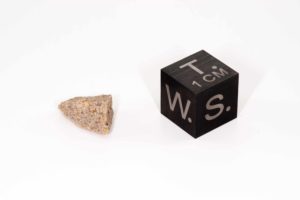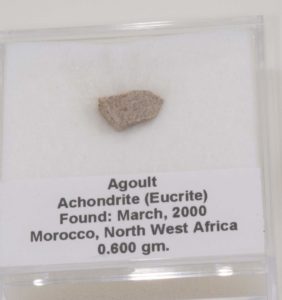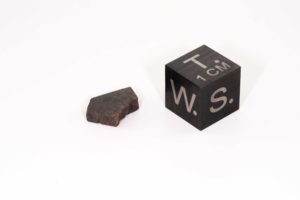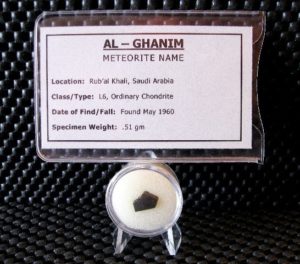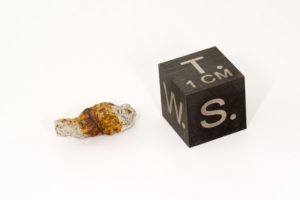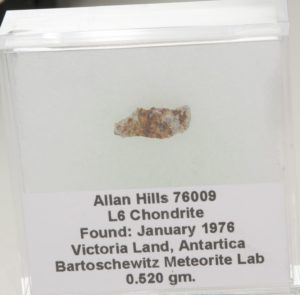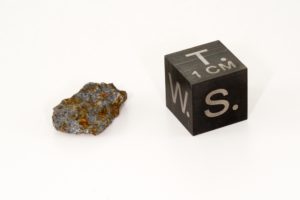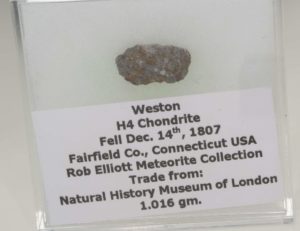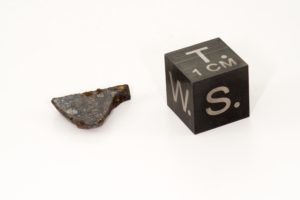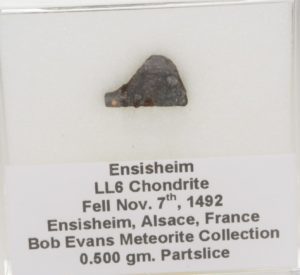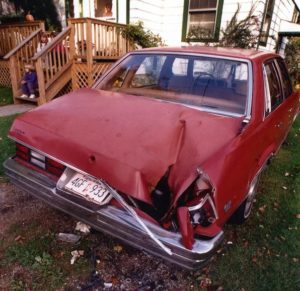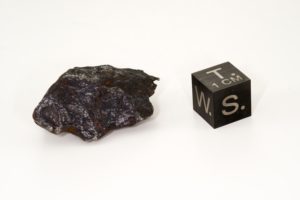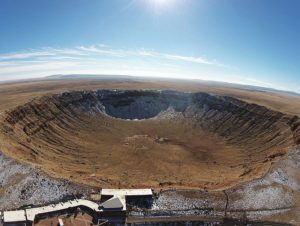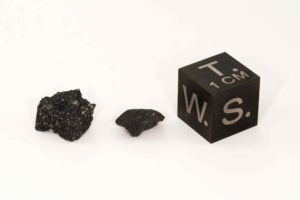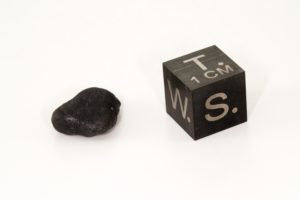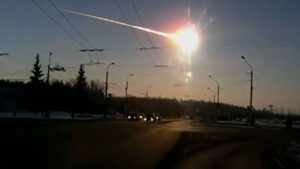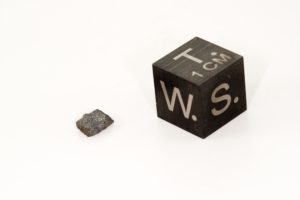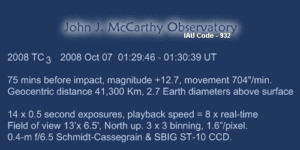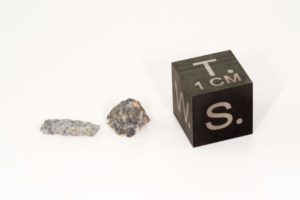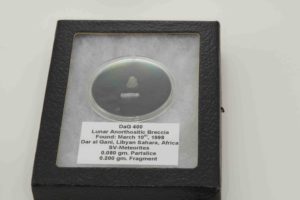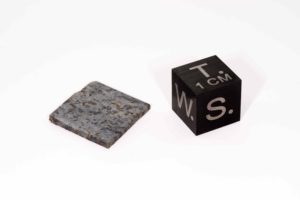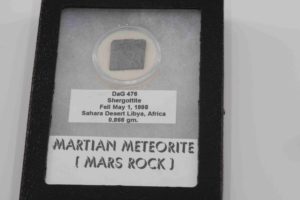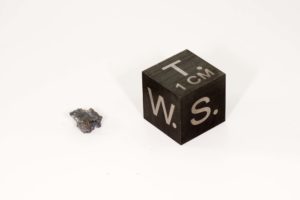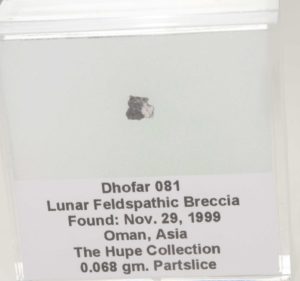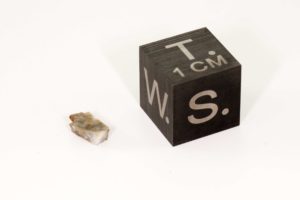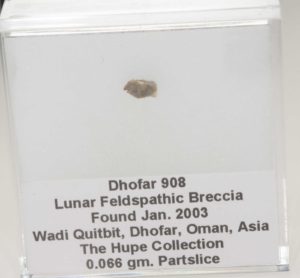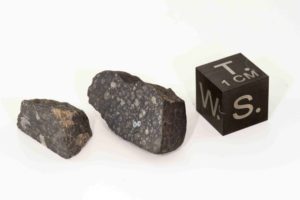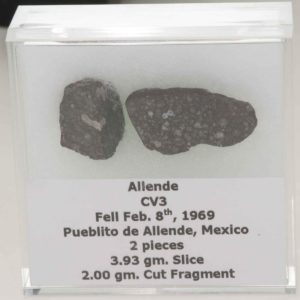Merchant Meteorite Collection
Don Merchant, a meteorite collector and dealer, graciously sold us his personal meteorite collection in the summer of 2018. Below is a sampling of items in this collection; more will be added as time allows. Our thanks to Gerard Bianchi for the meteorite images.
Click on the link to the right for a complete list: Meteorite Dataset
Agoult
This achondrite was found in Morocco in March, 2000.
Meteoritical Bulletin Database information can be found here: Agoult
Al-Ghanim
This ordinary chondrite was found in Saudi Arabia in May, 1960.
Meteoritical Bulletin Database information can be found here: Al-Ghanim
Allan Hills
This L6 chondrite was found in Victoria Land, Antarctica, in January 1976.
Meteoritical Bulletin Database information can be found here: Allan Hills
Weston
The Weston meteorite exploded over New Milford, Connecticut in December, 1807. Pieces of it fell in what was then Weston, Connecticut (that location is now part of Easton, Connecticut). It was the first well-documented fall in the New World, and this event began the study of meteoritics in the United States.
McCarthy Observatory founder Monty Robson wrote a scholarly article about this meteorite, which you can read here: Robson et al 2009.
Meteoritical Bulletin Database information can be found here: Weston
Ensisheim
The Ensisheim meteorite fell in Alsace, France, in 1492. It is the first meteorite fall to be observed and collected in the Western World.
Meteoritical Bulletin Database information can be found here: Ensisheim
Peekskill
This meteorite, an ordinary chondrite, fell in Peekskill, NY on Oct. 9, 1992, puncturing a hole in the trunk of a young women’s car.
Our sample is a .874 gm slice.
Meteoritical Bulletin Database information can be found here: Peekskill
Canyon Diablo
Canyon Diablo is the name given to meteorites that were pieces of the large asteroid that impacted in the Arizona desert about 50 thousand years ago. The impact site, now called Meteor Crater, is a major tourist attraction.
In new research, scientists have found an unusual graphite-diamond structure in these meteorites.
Meteoritical Bulletin Database information can be found here: Canyon Diablo
Murchison
Murchison meteorites, rare carbonaceous chondrites, fell near Victoria, Australia on Sept. 28, 1969. These meteorites contain pre-solar grains; particles that were formed in supernova explosions long before our solar system formed.
Meteoritical Bulletin Database information can be found here: Murchison
Chelyabinsk
The Chelyabinsk meteor, a small asteroid estimated to have been about the size of a six story building, fragmented and exploded over Chelyabinsk, Russia in February, 2013. About 1500 people were injured, mostly from shattered glass and other flying debris caused by the shock wave generated by the explosion.
Meteoritical Bulletin Database information can be found here: Chelyabinsk
Almahatta Sitta
This meteorite fell in the Nubian Desert in October, 2008. The parent object, asteroid 2008 TC3, was seen and tracked prior to hitting the Earth. McCarthy Observatory was one of the last observatories to record and measure its position before impact.
Meteoritical Bulletin Database information can be found here: Almahatta Sitta
Dar al Gani 400
Most meteorites are material left over from the formation of the solar system. A severe enough impact on another rocky world can send pieces of that object into space where they drift for millennia. If that material intersects with Earth’s orbit it can become a meteorite from another world. These specimen are Lunar in origin and were found in Dar al Gani, Libyan Sahara, in March, 1998.
Meteoritical Bulletin Database information can be found here: Dar al Gani 400
Dar al Gani 476
As described above for Dar al Gani 400, this is also a meteorite from another world, but this one is from Mars. Since we have many orbiters and rovers on Mars we can compare this material to what is on Mars and learn its origin. This piece was found in Dar al Gani, Libyan Sahara, in May of 1998.
Meteoritical Bulletin Database information can be found here: Dar al Gani 476
Dhofar 081
This Lunar meteorite was found in Oman, Asia in 1999.
Meteoritical Bulletin Database information can be found here: Dhofar 081
Dhofar 908
Another of our Lunar meteorites, this one was found in Oman, Asia in January, 2003.
Meteoritical Bulletin Database information can be found here: Dhofar 908
Allende
The Allende meteorite was seen to fall in Chihuahua, Mexico in February, 1969. It is one of the largest and most studied meteorites. It contains pre-solar grains that predate the formation of the Earth and our Sun.
Meteoritical Bulletin Database information can be found here: Allende

